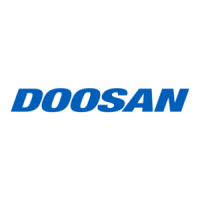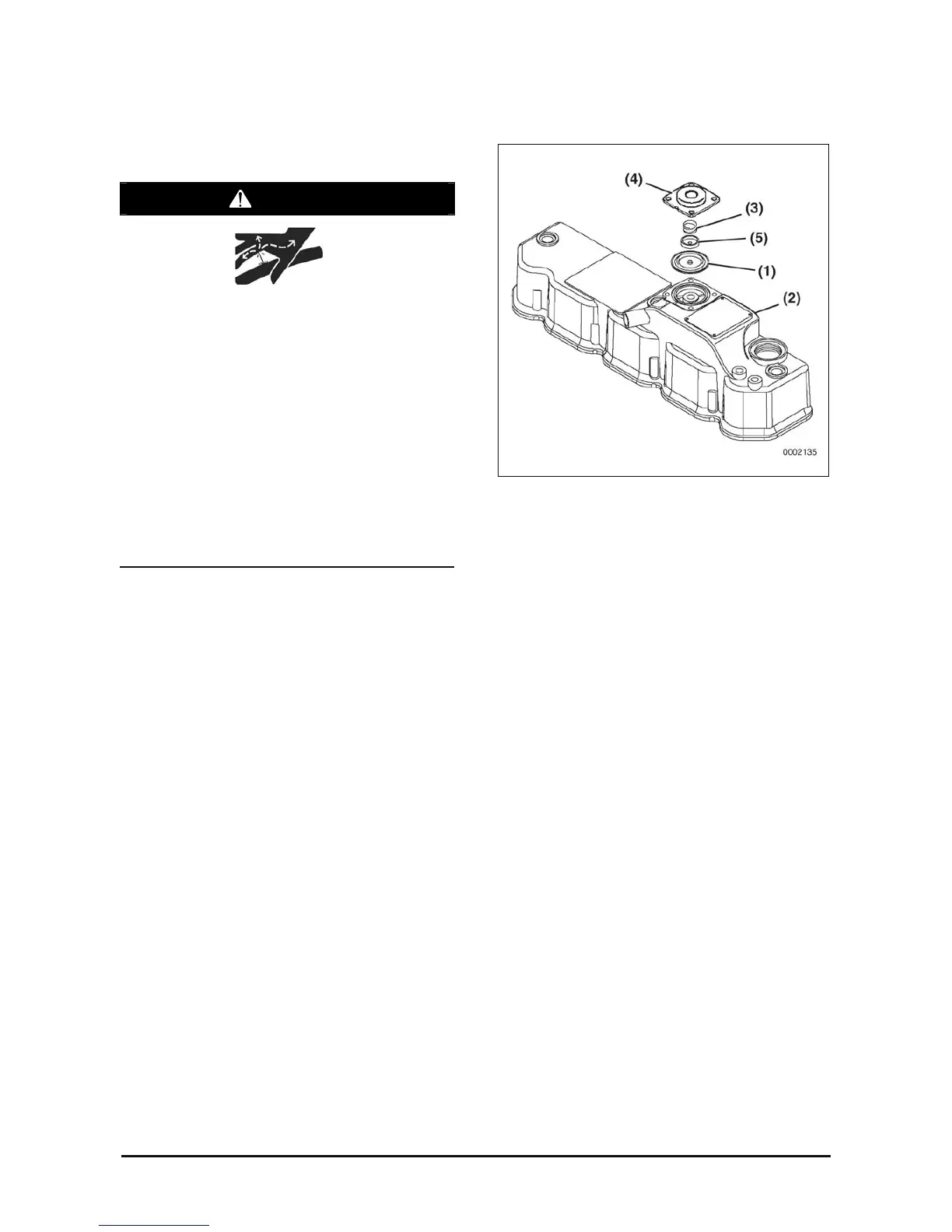Maintenance Section
-233-
Fuel Injectors (Diesel Engine Only)
– Inspect, Clean, Test
WARNING
HIGH-PRESSURE HAZARD!
Avoid skin contact with the high-pressure
diesel fuel spray caused by a fuel system leak
such as a broken fuel injection line.
High-pressure fuel can penetrate your skin and
result in serious injury. If you are exposed to
high-pressure fuel spray, obtain prompt medical
treatment.
NEVER check for a fuel leak with your hands.
ALWAYS use a piece of wood or cardboard.
Have your authorized Yanmar industrial engine
dealer or distributor repair the damage.
Failure to comply could result in death or
serious injury.
Proper operation of the fuel injectors is required to
obtain the optimum injection pattern for full engine
performance. The EPA / ARB requires that the fuel
injectors are inspected, cleaned and tested every
1500 hours. See Testing of Fuel Injectors on
Service Manual
Crankcase Breather System
(4TNV98 Diesel Engine Only) -
Inspect
Proper operation of the crankcase breather system
is required to maintain the emission requirements
of the engine. The EPA / ARB requires that the
crankcase breather system is inspected every 1500
hours.
4TNV98 engines use a crankcase breather system
that has a spring-backed diaphragm (Figure5-19,
(1)) in the valve cover (Figure5-19, (2)). When the
crankcase pressure reaches a predetermined value,
the diaphragm opens a passage that allows
crankcase fumes to be routed to the intake
manifold.
To inspect the diaphragm and spring (Figure5-19,
(3)):
1. Remove the bolts retaining the diaphragm
cover (Figure5-19, (4)).
Figure5-19
2. Remove the diaphragm cover, spring,
diaphragm plate (Figure5-19, (5)) and
diaphragm.
3. Inspect the diaphragm for tears. Inspect the
spring for distortion. Replace components if
necessary.
4. Reinstall the diaphragm, diaphragm plate,
spring and diaphragm cover. Tighten the
diaphragm bolts to specified torque.
Failure of the diaphragm and / or spring will cause
the loss of pressure control and allow an excessive
amount of crankcase fumes to be routed to the
intake manifold. This could result in excessive
deposits in the intake system, high engine exhaust
smoke levels, excessive engine oil consumption,
and / or engine run-on due to the burning of the
engine oil

